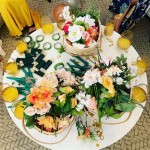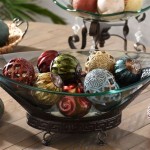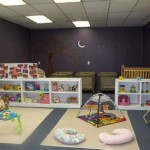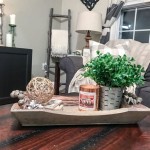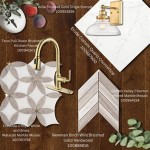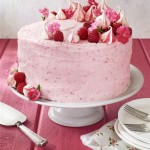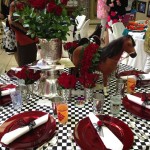Red and Teal Home Decor: A Study in Complementary Contrast
The realm of interior design encompasses a vast spectrum of stylistic choices and color palettes, each capable of evoking specific moods and creating unique atmospheres. Among these, the combination of red and teal presents a compelling study in complementary contrast. These colors, situated opposite each other on the color wheel, offer the potential for dynamic and visually engaging interior spaces when employed with thoughtful consideration.
The success of red and teal decor hinges on understanding their inherent properties and employing strategic techniques to balance their intensities. Red, often associated with passion, energy, and warmth, can easily dominate a space if used excessively. Teal, a blend of blue and green, offers a calming and sophisticated counterpoint, lending a sense of serenity and tranquility. The careful application of these colors in varying proportions and textures is crucial for achieving a harmonious and balanced aesthetic.
Understanding the Psychology of Red and Teal
Red, as a primary color, possesses a powerful psychological impact. Studies suggest that red can stimulate the senses, increase energy levels, and even elevate heart rate. In interior design, red can be used to create a focal point, draw attention to architectural details, or infuse a room with a sense of drama and excitement. However, its intensity necessitates caution, as overuse can lead to feelings of agitation or overwhelm. Lighter shades of red, such as coral or blush, offer a more subdued and approachable take on this vibrant hue.
Teal, on the other hand, is often associated with calmness, clarity, and sophistication. Its blue undertones evoke feelings of peace and tranquility, while its green elements connect it to nature and growth. Teal can be employed to create a relaxing atmosphere, promote concentration, or add a touch of elegance to a space. Its versatility allows it to be used as a dominant color in bedrooms or bathrooms, or as an accent color in living rooms and dining areas. Different shades of teal, ranging from deep turquoise to pale aquamarine, offer varied aesthetic possibilities.
Strategic Application of Red and Teal in Interior Spaces
The successful integration of red and teal requires a strategic approach, considering factors such as room size, natural lighting, and desired atmosphere. One effective method is to establish a dominant color, typically teal due to its calming nature, and use red as an accent color. This approach allows for a sense of balance and prevents the red from overwhelming the space.
Another strategy involves using different shades and tones of each color to create depth and visual interest. For example, a room might feature walls painted in a light teal, complemented by furniture upholstered in a deep burgundy and accents in a bright coral. This variation in intensity helps to break up the monotony and create a more nuanced and sophisticated aesthetic.
Consider the size of the room when determining the proportions of each color. In smaller rooms, it's generally advisable to use more teal than red to avoid creating a claustrophobic or overwhelming environment. In larger rooms, the balance can be adjusted to incorporate more red, provided it is done thoughtfully and strategically.
Natural lighting also plays a crucial role in how these colors appear. Red tends to appear warmer and more vibrant in natural light, while teal can appear cooler and more subdued. In rooms with limited natural light, consider incorporating artificial lighting that enhances the desired effect of each color.
Incorporating Textures and Patterns
Beyond the strategic application of color, the integration of textures and patterns is vital for creating a visually compelling and layered interior space. Textures can add depth and dimension to the room, while patterns can introduce visual interest and personality.
Consider incorporating textures such as velvet, linen, and silk to enhance the tactile experience of the space. A velvet teal sofa, for example, can add a touch of luxury and comfort, while linen curtains in a soft red can create a warm and inviting atmosphere. Rough textures, such as distressed wood or exposed brick, can provide a rustic contrast to the smooth surfaces of painted walls or upholstered furniture.
Patterns can be introduced through textiles, wallpaper, or artwork. A geometric patterned rug in shades of red and teal can anchor the room and tie together the color scheme. A floral patterned wallpaper in a teal and red palette can add a touch of elegance and sophistication. Abstract artwork featuring red and teal hues can serve as a focal point and inject personality into the space.
When selecting patterns, consider the overall scale of the room and the desired level of visual complexity. In smaller rooms, it's generally advisable to use smaller-scale patterns to avoid overwhelming the space. In larger rooms, larger-scale patterns can be used to create a more dramatic and impactful effect.
Utilizing Accent Colors and Materials
While red and teal form the core of the color scheme, the judicious use of accent colors and materials can further enhance the overall aesthetic and create a more cohesive and balanced design. Neutral colors, such as white, gray, and beige, can serve as a backdrop and provide a sense of calm and serenity.
Metallic accents, such as gold, silver, or copper, can add a touch of glamour and sophistication. Gold accents, in particular, can complement the warmth of red and enhance the richness of teal. Silver or copper accents can provide a cooler contrast and add a modern edge. These metallic elements can be incorporated through lighting fixtures, hardware, or decorative accessories.
Natural materials, such as wood, stone, and glass, can introduce organic textures and enhance the connection to nature. Wood furniture in a medium tone can provide a warm and inviting contrast to the coolness of teal. Stone countertops or fireplaces can add a sense of grounding and stability. Glass vases or artwork can reflect light and create a sense of openness and airiness.
Green, being adjacent to teal on the color wheel, can serve as a complementary accent color. Incorporating plants or green decorative elements can further enhance the connection to nature and create a sense of freshness and vitality.
Examples of Red and Teal Decor in Different Rooms
The application of red and teal decor can be tailored to suit the specific function and ambiance of different rooms within a home. In a living room, a teal sofa can serve as the focal point, complemented by red accent pillows, artwork, and a patterned rug. White walls and neutral flooring can provide a calming backdrop, while metallic accents can add a touch of glamour. The use of varying textures, such as velvet, linen, and wool, can create a layered and inviting atmosphere.
In a bedroom, teal walls can create a tranquil and relaxing environment, while red bedding and curtains can add a touch of warmth and romance. Dark wood furniture can ground the space, while soft lighting can enhance the sense of calm. The use of natural materials, such as cotton and linen, can promote comfort and relaxation.
In a kitchen, teal cabinets can provide a pop of color, while red accents, such as cookware or small appliances, can add a touch of vibrancy. White countertops and backsplash can create a clean and modern look, while stainless steel appliances can provide a sleek and contemporary feel. The use of natural light can enhance the functionality and appeal of the space.
In a bathroom, teal tiles can create a spa-like atmosphere, while red towels and accessories can add a touch of warmth and energy. White fixtures and countertops can provide a clean and minimalist look, while metallic accents can add a touch of luxury. The use of plants can enhance the connection to nature and create a sense of freshness.

Deep Bright 10 Ways With Red Teal Living Room Decor Rooms Gray

Teal And Red Decor Ideas Eatwell101

Teal And Red Decor Ideas Eatwell101

Luxury Fashion Independent Designers Ssense Living Room Red Turquoise Decor

Another Example Of Red Turquoise Aqua Living Room Home Decor Designs

Decorating With Red The Blinds Com Blog

Abstract Art Teal Red White Brown Neutral Artwork

Beautiful Living Rooms Turquoise Home Decor Yellow Room Colors

The 27 Best Colors To Pair With Red At Home That Go

Autumn Warmth Red And Turquoise Fall Manteldiy Show Off Diy Decorating Home Improvement Blog

